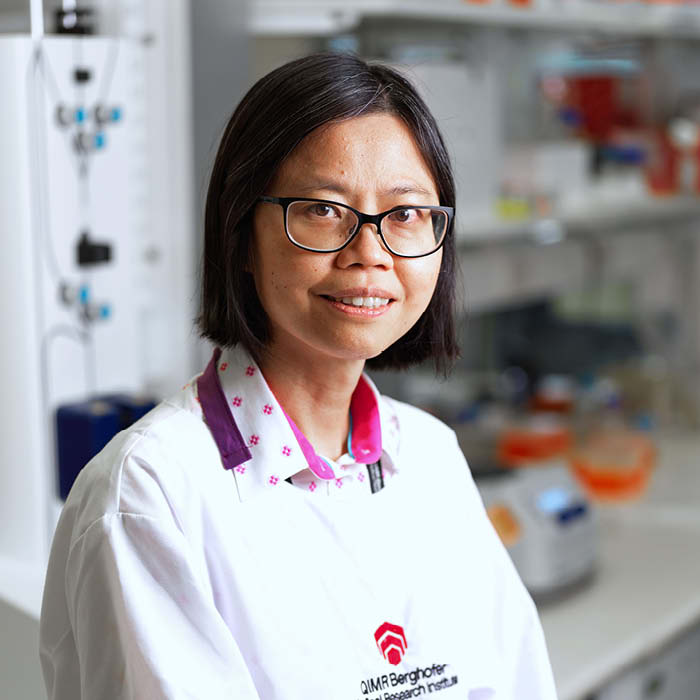
Dr Siok Tey
Preparation of patients, their carers, the cell therapy team and colleagues in ICU, the ED and neurology are key to the management of CAR T cell therapy toxicities, according to an Australian clinical team.
Speaking at Blood 2021, Dr Siok Tey presented the institutional experience at the Royal Brisbane and Women’s Hospital over the last year in which 16 patients received infusions.
Dr Tey, a haematologist and bone marrow transplant physician and head of the Translational Cancer Immunotherapy Laboratory at QIMR Berghofer, said three patients required ICU mainly due to immune effector cell-associated neurotoxicity syndrome (ICANS).
Tocilizumab was used to manage six patients and dexamethasone in three patients.
“We are perhaps using more tocilizumab than other institutions on average but we may need to think about being somewhat less liberal with the squeeze on tocilizumab supply.”
“We are still learning. In all likelihood, how we manage this and triage this will change with time.”
Dr Tey presented two case studies which helped highlight the real world experience and management of the acute toxicities of cytokine release syndrome (CRS) and ICANS.
CRS
One patient, a 73-year old male received tisagenlecleucel for refractory stage IVB DLBCL. Within about 24 hours of CAR T infusion, the patient had developed a persistent fever.
Antibiotics were appropriately escalated from ciprofloxacin to tazocin, meropenem and vancomycin however the patient was culture negative throughout and his condition warranted multiple MERT calls.
Dr Tey said clinically the patient had CRS although he did not have the other CRS grading parameters of hypotension or hypoxia.
“While the ASTCT has come up with consensus grading criteria, it hasn’t actually come up with a consensus treatment plan,” she said.
Instead, treatment was somewhat nuanced depending on the risk of patients progressing to higher grade CRS, the cell product, disease bulk, patient’s performance status and organ function.
“But in general we start with supportive care, and if there is concern we can think about giving tocilizumab a little earlier or otherwise they wait until grade 2 CRS and for patients higher than that we will use corticosteroids.
The patient responded rapidly to tocilizumab administered on day 4 and was able to be discharged a few days later.
ICANS
Another patient, a 68 year old male with relapsing DLBCL and complicated history, also received tisagenlecleucel.
Dr Tey said he was progressing quite well until day 7 when he became unusually sleepy and intermittently disoriented.
His immune effector cell-associated encephalopathy (ICE) score was 10/10 however he was “not as sharp as usual” and there was also a clear deterioration in his handwriting over multiple assessments.
The patient also had prominent myoclonic jerks, a drop in oxygen saturation and a dip in blood pressure despite a stable dose of hydrocortisone.
“This patient would sit between a grade 1 and 2 [ICANS] because he does wake spontaneously but dozes off now and then.”
“Again there is no consensus management guideline for ICANS,” she said. “While ICANS and CRS are related and do come together, treatment with tocilizumab alone is generally insufficient.”
The patient was treated with 10 mg dexamethasone and 8 mg/kg tocilizumab, leading to improvements in blood pressure, a surprisingly rapid improvement in his handwriting and a full neurological recovery by the next morning.
Dr Tey said CAR T patients were conservatively advised to prepare for 7-10 days in hospital, 4 weeks in Brisbane, 8 weeks with a full time carer and 8 weeks of no driving.
She said other toxicities associated with CAR T therapy included macrophage activation syndrome, coagulopathy, cardiotoxicity, cytopenia, infection and hypogammaglobulinaemia.